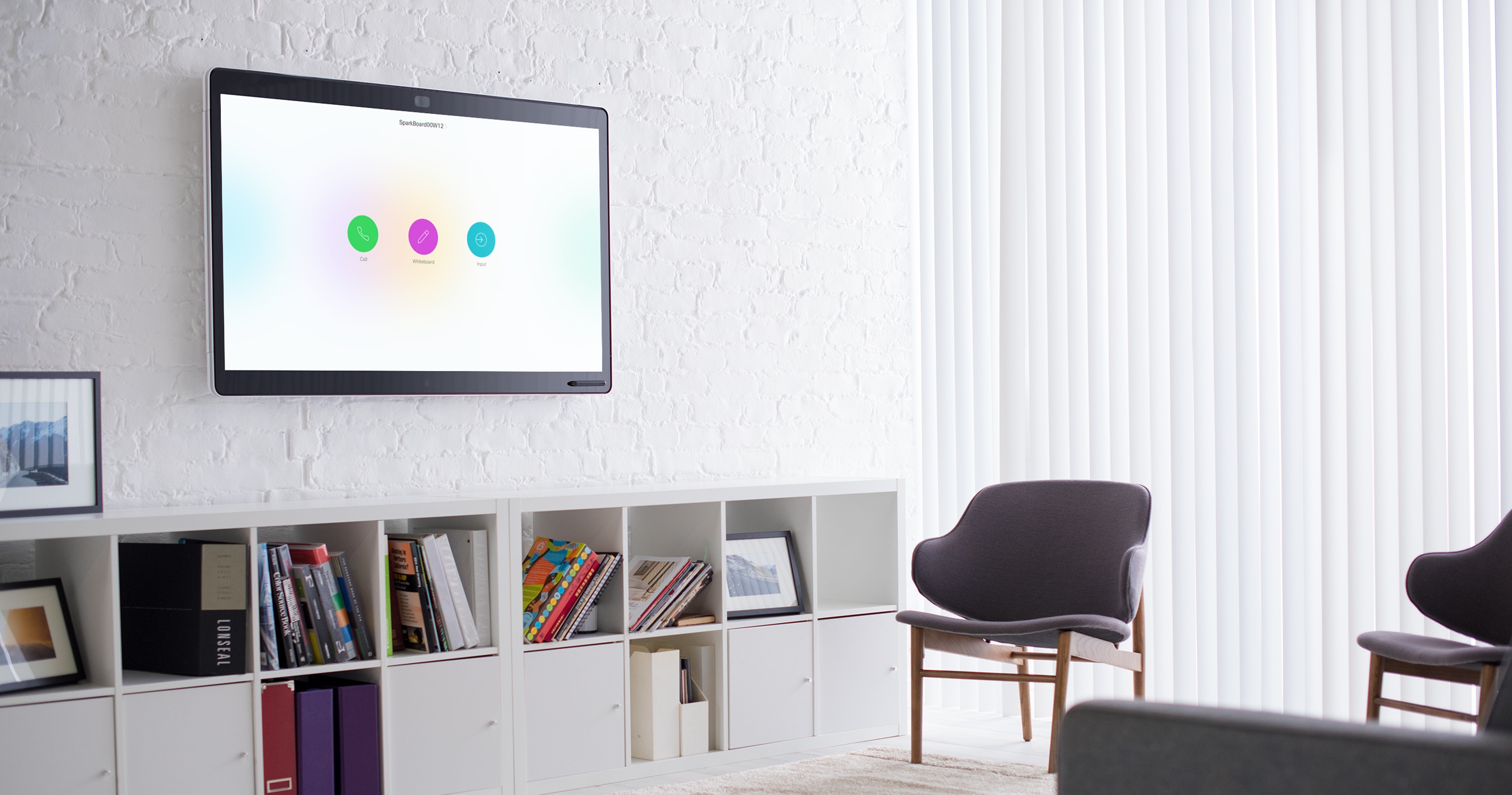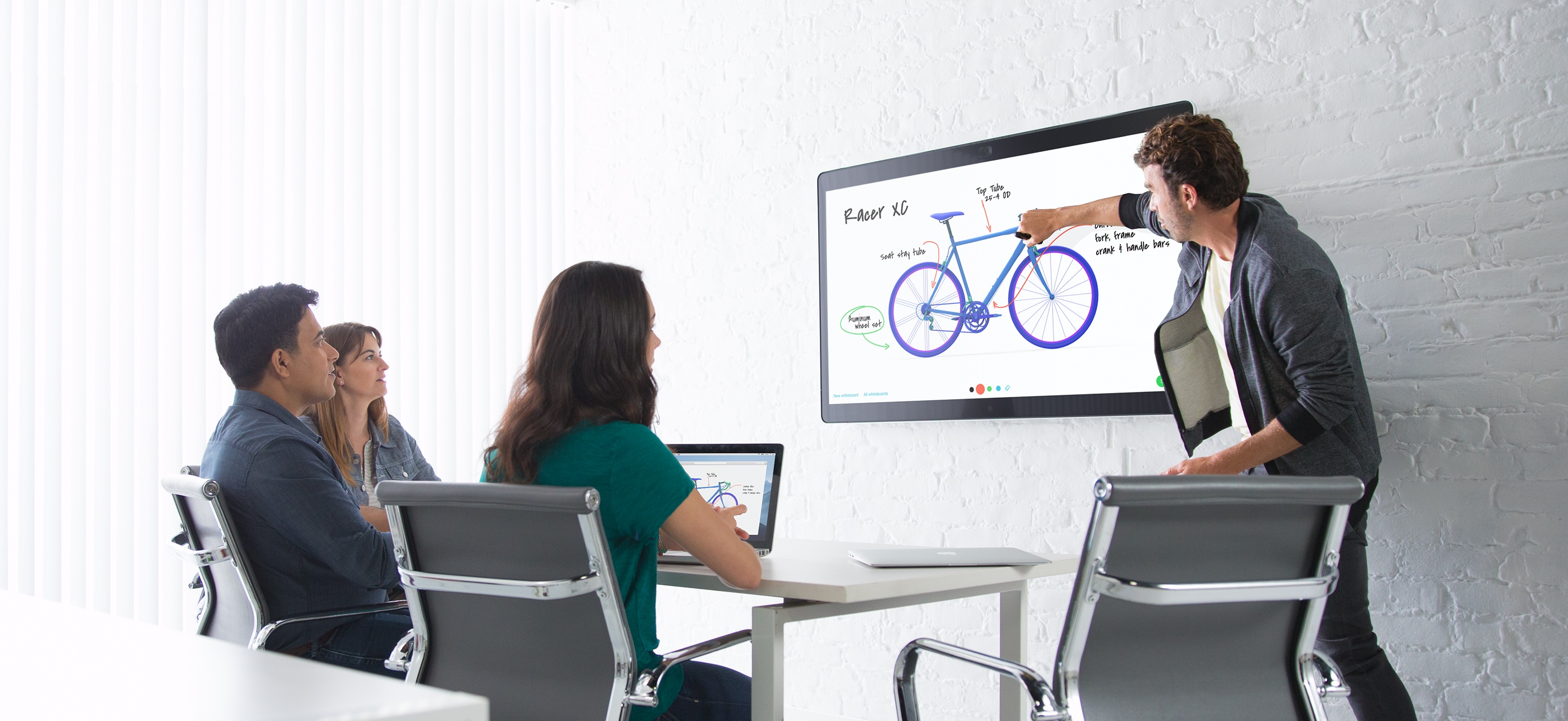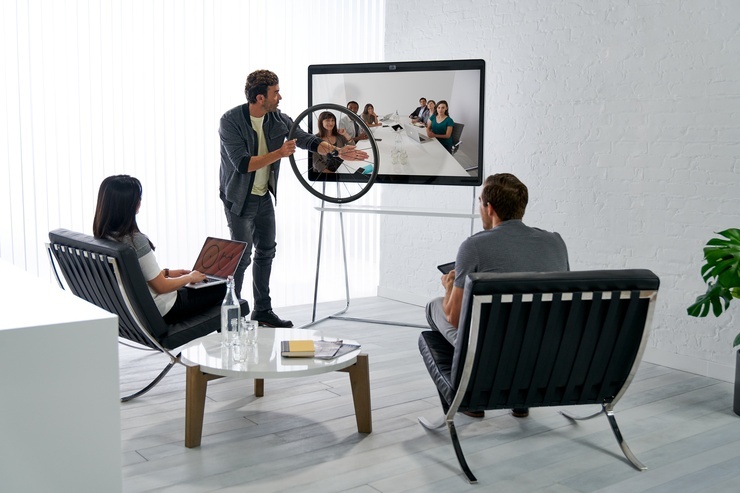On January 24, 2017, Cisco announced the next steps in their plan to reshape collaboration with their Cisco Spark platform. The event focused on two aspects: first, the unveiling of the new Cisco Spark Board and second, the (re-)launch of Cisco Spark Meetings as well as enhancements to the Cisco Spark application on all platforms.
Cisco Spark Board: An “All-in-One” Meeting Room Device
We’ve all lived this situation or a variation on the theme: You need to share your screen to present a document to your audience in the room, only to find that the TV or projector is set on the wrong source. Its cable doesn’t have the right connector for your new laptop, and remote participants can’t see your screen because you forgot to schedule a WebEx session for them to join. Add videoconferencing to the mix (where is that pesky remote control?), and you have a recipe for disaster.

Credit: Cisco
With the Spark Board, Cisco embarked on a journey to completely revolutionize meetings. Their goal was to eliminate the different siloed technologies that make up the traditional meeting room: TV or projector, speakers, microphones, amplifiers, cables… and even the good ol’ whiteboard. The Spark Board is all that, and more.
The Spark Board resembles an oversized tablet, with its 55-inch or 70-inch of glorious capacitive (read: touch screen) 4K UHD display. Embedded in the board’s bezel is a 12-element microphone array supporting beamforming technology, which allows the device to zone in on the active speaker, no matter where he or she is located in the room while reducing ambient noise. As per Cisco, this eliminates the need for a table or ceiling microphones.
The board also includes an integrated 4K 60 fps camera, offering an 86 degree field of view. Only one cable is required for the Spark Board: a power cable – all other forms of connectivity is achieved via the Wi-Fi network, from its connectivity to the Cisco Collaboration Cloud to its link to presenters’ device, laptop or mobile, for screen sharing.

Credit: Cisco
In addition to a state-of-the-art display and videoconferencing endpoint, the Cisco Spark Board is also a replacement to the traditional whiteboard. Now an integral part of the meeting experience, remote users can now easily see the contents of the whiteboard and even collaborate live with colleagues across the world seamlessly from their Spark application or another meeting room sporting a Spark Board.
The content of the whiteboard is always saved directly in the Spark space for the meeting, allowing participants to review past whiteboarding sessions or even to bring them back to the screen for further editing. Users of the Spark Board can interact with its whiteboard functionality using their fingers (plural, since it is multitouch-enabled) or using the included smart pen.

Credit: Cisco
Cisco Spark Meetings and Enhancements to the Spark Application
Again with the objective of reshaping the meeting experience, Cisco Spark Meetings sets out to fix some of the main reasons people hate meetings: participants come unprepared to meetings, scheduling meetings are difficult and complicated, and content shared during meetings is no longer accessible after it is over.
All from the Cisco Spark application and with the newly improved Spark Meetings, a meeting can now be easily scheduled with participants in any space right from the new Activity menu. This automatically opens a new calendar invite in Microsoft Outlook (or in the native calendaring app for mobile devices) pre-populated with the right invitee list and a URL link to the Spark space. Since the meeting is now intimately tied to the Spark space, attendees can have discussions leading up to the meeting, as well as share content to participants ahead of time to allow them to better prepare for the meeting.
Once the meeting is over, shared documents, including whiteboard sessions from the Spark application or Spark Board, remain available in the space for later reviewing. Discussions can also naturally occur after the meeting in this same Spark space for follow-ups, action items, notes or comments. With these new features, Spark Meetings can accommodate every step in the normal flow of interactions between team members.
Other enhancements to the Cisco Spark application are numerous, with a few key highlights:
- New Activity menu, allowing better access to core Spark activities: Message, Call, Meetings, People, Files, and Whiteboard.
- New Presence statuses: Do Not Disturb and Out of Office (tied directly to the Outlook/Exchange Out of Office settings).
- Multitasking: navigate and interact with other spaces while in a Spark call or meeting.
If you have any questions about how Cisco Spark and the new Spark Board can fit into your communications strategy, please don’t hesitate to contact the team at Stack8
Ready to take your unified communications from headache to hassle-free?
No throwing darts at proposals or contracts. No battling through the back-end. No nonsense, no run-around.



